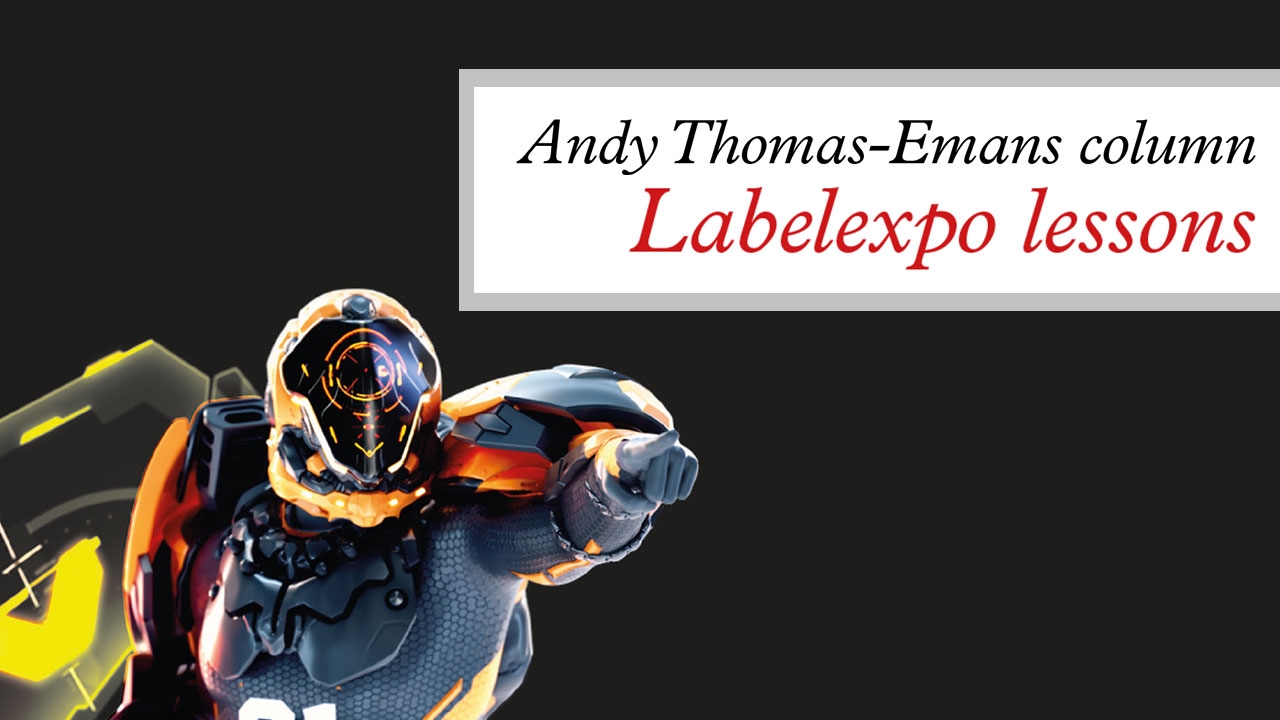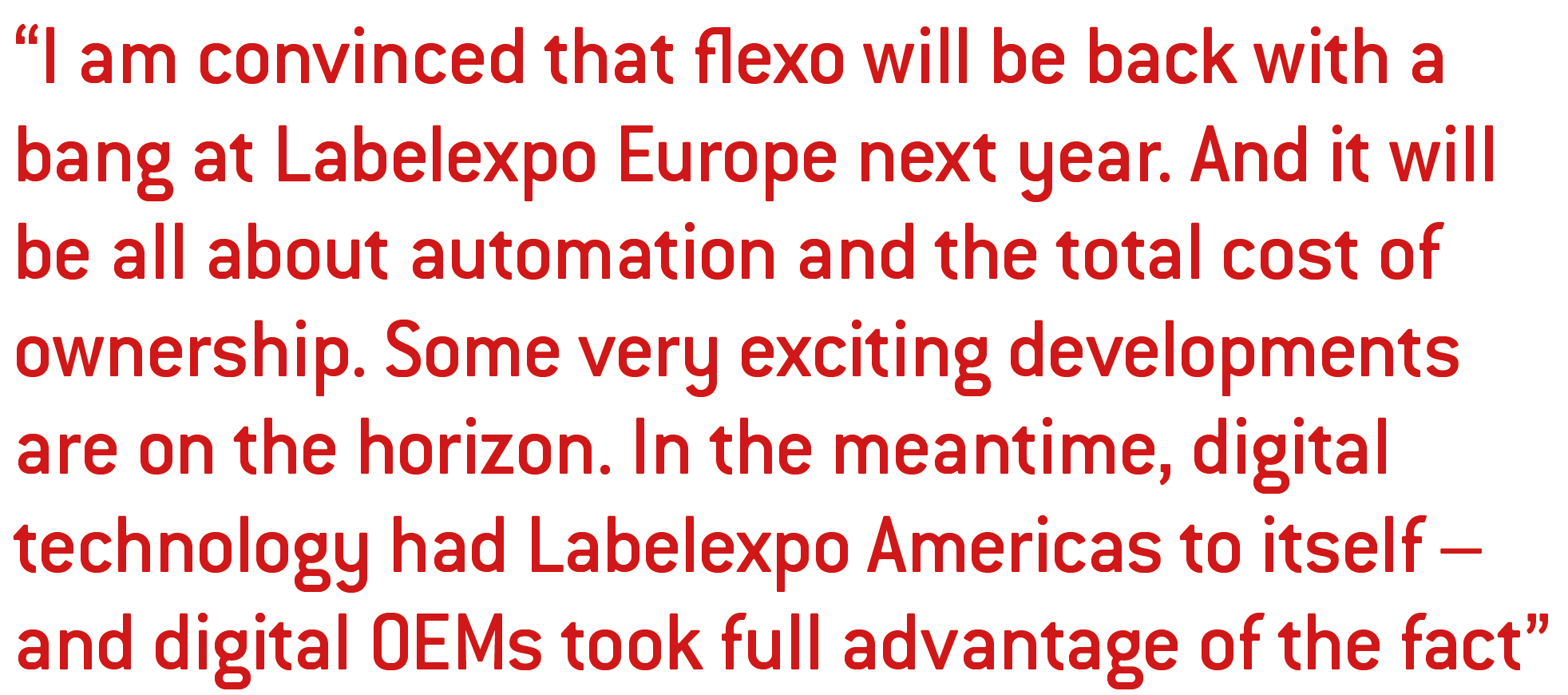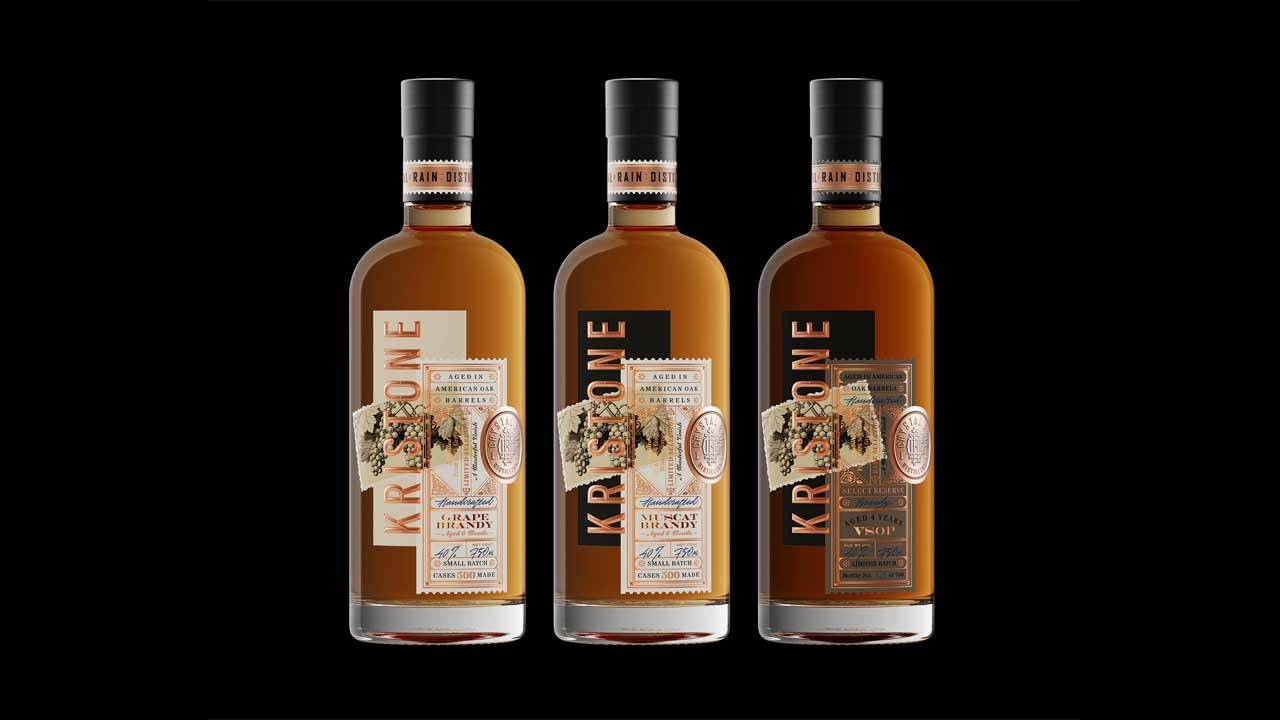Andy Thomas-Emans column - Labelexpo lessons
Labelexpo Americas finally gave us a chance to see the new technology developed over the last three years.

Andy Thomas-Emans column - Labelexpo lessons
It was a fantastic experience to be back at a physical Labelexpo for the first time in three years. After the excitement of the show, what have we learned about the future direction of the labels industry?
Firstly – is flexo dead? There were no flexo presses at the show, even from champions of the technology like Mark Andy, which had three digital/hybrid machines on stand, including the global launch of its 5-color (CMYK+W) DMax Pro press. Gallus, Omet and MPS had stands but no presses and Gallus was mainly promoting its GallusONE standalone UV inkjet press.
Interestingly, visitors certainly were interested in flexo, and flexo sales were actually made at the show. And after conversations with suppliers at Labelexpo and in visits after the show – most recently to Nilpeter –this writer is convinced that flexo will be back with a bang at Labelexpo Europe next year. And it will be all about automation and the total cost of ownership. Some very exciting developments are on the horizon.

In the meantime, digital technology had the show to itself – and digital OEMs took full advantage of the fact. The worldwide launch by HP Indigo of its much-anticipated V12 press delivered the goods, producing high-quality fully variable print at 120m/min (394ft/min). Durst meanwhile showed its RSCi UV inkjet press printing at 100m/min (328 ft/min). These presses are fully able to match the speed and productivity of flexography – a major milestone in the progress of digital print.
Both presses were shown printing roll-to-roll. High-speed finishing systems will initially be near-line. However, we learned that high-speed in-line finishing systems with extensive automation are under development by ABG and these will again move the digital story forward.
What ‘lights out’ automation might look like on a finishing line was demonstrated by Cartes and Prati, combining inkjet varnishing, digital foiling and laser die-cutting. Indeed, the advance of digital embellishment was a key theme of the show and point to the future.
Particularly interesting from a digital embellishment point of view was JetFX’s 30in-wide (762mm) print bar, which operates at 100m/minute using both EB and UV inks. JetFX was showing examples of embellishments on pouches and shrink sleeves as well as PS labels.
This opens another route for converters to add digital embellishment to existing or new mid-web flexo presses.
Colordyne also produces modules that give flexo presses a digital hybrid capability. The company was demonstrating a very promising water-based inkjet module capable of jetting onto nonporous materials using pigmented WB inks developed by Kao.
Practical approaches to sustainability were another key theme of the show, with sustainability-based technologies dominating the Global Label Award categories. Actega won an award for its Signite technology that allows a decorated label, including adhesive, to be printed onto a backing liner and applied to a glass container, eliminating the need for die-cutting or even a face material. It was demonstrated on the company’s stand along with its award-nominated Ecoleaf digital foiling technology, which uses a donor roll and printed target to eliminate tooling in foiling applications.
Flint Group won an award for its Evolution de-inking primer, which allows UV flexo ink to delaminate from a PET shrink sleeve surface in recycling systems. This demonstrates a trend towards label systems that promote the recovery of clean PET waste without contamination from inks or adhesives. The label thus becomes a positive enabler of the circular materials economy.
S-OneLP was awarded for its ReEarth compostable prelaminated flexible packaging film.
Xeikon was also keen to hitch its star to the sustainability wagon with the launch of its Titon toner, which contributes to a move towards paper-based flexible packaging as a substitute for multi-layer plastics. Titon toners incorporate additional protective layers for heat, sunlight, water, scratch and scuff resistance and are safe for both direct and indirect food contact.
TLMI’s Eco Stage featured a range of interesting speakers on sustainability. Perhaps the most interesting was on gasification technology, which promises to allow the recovery of methanol – the precursor for plastics production – from mixed packaging waste.
These are some of the key trends evident at this exciting show, and you can read about each technology in more detail throughout this edition of Labels & Labeling. Now we can start looking forward to Labelexpo Europe 2023.
Stay up to date
Subscribe to the free Label News newsletter and receive the latest content every week. We'll never share your email address.


